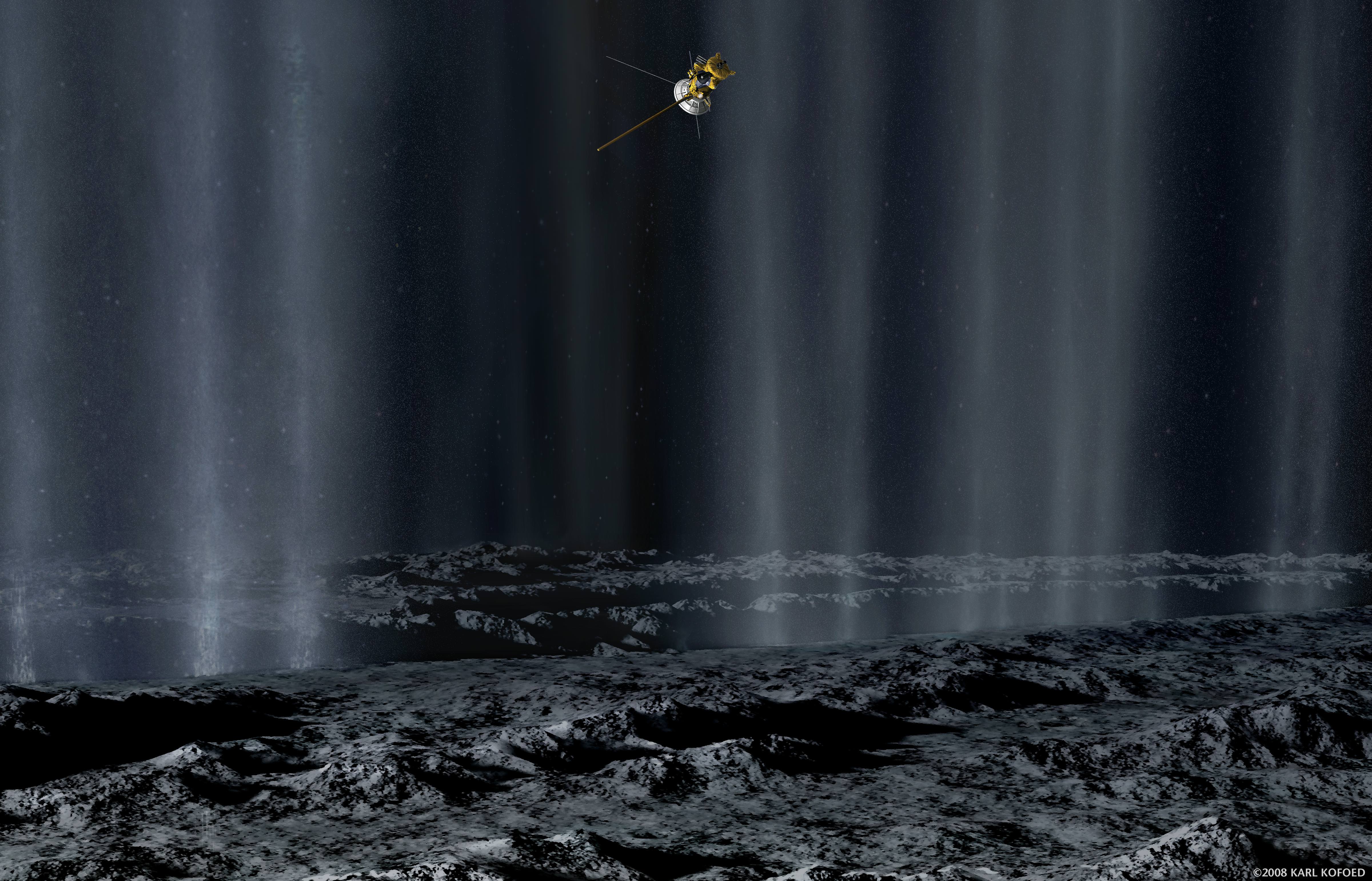What a parting gift the Cassini mission gave us.
Below is a movie sequence of images, garnered from the final dedicated observation of the Enceladus’ geysers by the imitable Cassini spacecraft.

The images were obtained over approximately 14 hours. Credit: NASA/JPL-Caltech/Space Science Institute
Back in August of 2017, Cassini stared at Enceladus for 14 hours, looking at the moon’s night side. The movie begins with a view of the part of the surface lit by reflected light from Saturn and transitions to completely unilluminated terrain. About halfway through the sequence, the exposure time of the images changes in order to make fainter features more visible as the light level drops.
“That’s why stars appear towards the end—they’re the small dots streaking by,” said Paul Byrne, planetary scientist and associate professor at Washington University in St. Louis, who brought this animation to our attention on Twitter.
Just 18 days after these observations of Enceladus, Cassini plunged into Saturn. This ‘self-sacrifice’ ensured that any potentially habitable moons of Saturn wouldn’t be contaminated sometime in the future if the drifting, unpowered spacecraft were to accidentally crash land there. Microbes from Earth might have adhered to Cassini, and its RTG power source was still generating some warmth. If not destroyed, it could melt through the icy crust of one of Saturn’s moons, possibly, and reach a subsurface ocean.
Enceladus became one of the biggest surprises — and joys — of the 13-year Cassini mission. At only about 310 miles (500 km) in diameter, the bright and ice-covered Enceladus should be too small and too far from the Sun to be active. Instead, this little moon with active geysers at its south pole is one of the most geologically dynamic objects in the Solar System.

While the images of the geysers are stunning, another instrument on Cassini, the magnetometer, first noticed something strange on spacecraft’s first flyby of the icy moon in 2005. The magnetic field seemed to be ‘draped’ around Enceladus, initially suggesting an atmosphere of some sort. Later, on a subsequent pass, Cassini images revealed jets of water vapor and ice erupting form the surface of Enceladus.
The discovery of the geysers took on more importance when Cassini later determined the plumes contained water ice and organics. Since life as we know it relies on water, this small but energetic moon has been added to the short list of possible places for life in our Solar System.
Recent studies have revealed methane present in the plumes, another hint towards of possible life.
We all miss Cassini, but the spacecraft keeps on giving, even after its demise, as scientists continue to study the treasure trove of data it gathered during its years at Saturn.

Lead image caption: Artist’s conception of the Cassini spacecraft flying amid geysers on Enceladus, a moon of Saturn. Credit: Karl Kofoed / NASA

